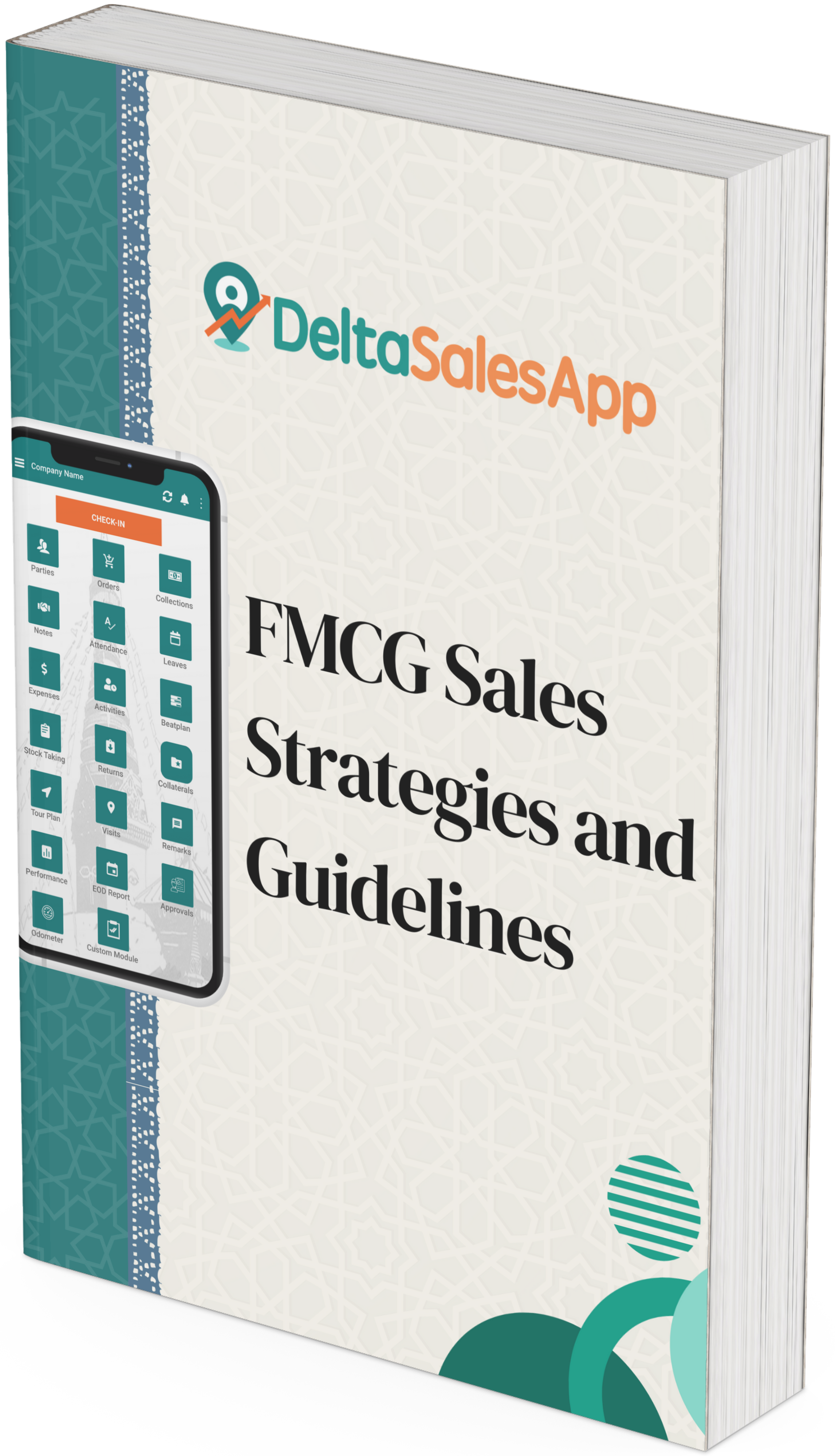From Sales Force to Shelf: Building an Effective FMCG Route to Market Strategy

In the world of Fast Moving Consumer Goods (FMCG), success doesn’t come simply from having the best product. It comes from ensuring that the product reaches the right shelves at the right time — efficiently, consistently, and profitably.
At the heart of this lies an intelligent, well-executed Route to Market (RTM) strategy.
The Route to Market is the invisible highway that connects brands to consumers. It involves the careful orchestration of field sales teams, retailers, logistics networks, and customer-facing strategies, all working together to ensure that products are available when and where customers want them.
In this article, we explore how modern FMCG companies can build an effective, future-proof Route to Market strategy — from empowering sales teams to perfecting retail execution — in a world that demands speed, data-driven decisions, and relentless efficiency.
The Evolution of Route to Market in FMCG
The traditional Route to Market for FMCG brands relied heavily on manual processes. Sales representatives would visit retail outlets with paper catalogs, manually record orders, and submit them to the office, where they would be processed into the distribution chain.
This method, while functional in the past, is too slow for today’s dynamic retail environments.
Today’s FMCG Route to Market demands real-time information flows, data-driven decision making, and seamless integration between field teams, retailers, and supply chains. Brands must be agile, customer-focused, and technologically enabled to stay ahead.
Global research shows that companies with optimized, technology-backed RTM strategies grow 15–25% faster than competitors who stick with traditional models. Brands that can respond rapidly to consumer demand shifts, stock-out situations, and promotional campaigns have a distinct advantage in a saturated marketplace._1745924523.jpeg)
Sales Force Empowerment: The Heart of Route to Market Excellence
At the core of any effective RTM strategy lies a highly trained and empowered sales force.
Sales representatives are no longer just order takers. They are brand ambassadors, retail consultants, and frontline strategists who influence how well your brand performs at the point of sale.
To maximize their effectiveness, companies must invest in Field Sales Force Automation (SFA) solutions that transform how sales reps operate daily.
SFA tools provide mobile access to updated product catalogs, promotional offers, customer histories, and real-time stock levels. With one click, a field sales representative can place an order, check sales targets, audit shelf compliance, and report competitor activity — all while standing inside the retailer’s shop.
Companies that integrate Sales Force Automation platforms have observed tangible performance improvements, including faster order cycles, fewer errors, and an increase in productive retail visits. In turn, these efficiencies translate into better market penetration and higher retail satisfaction._1745914538.png)
Empowering the sales force with technology also builds confidence, helping reps not just achieve their KPIs but to provide deeper value to every retailer interaction.
Building Stronger Retail Execution
Beyond the efforts of the sales force, success at the shelf remains the real battleground in FMCG.
The shelf is where the shopper makes their final decision. A brand may spend millions on advertising, but if its product isn’t visible or well-placed in the store, all that investment risks being wasted.
Strong retail execution involves more than simply placing products on shelves. It requires consistent stock availability, attractive visual merchandising, active promotional participation, and engaged retailer support.
Research from leading retail studies indicates that poor shelf execution leads to sales losses of up to 8–10% annually across key FMCG categories. Meanwhile, brands that achieve top-tier shelf compliance and stock availability consistently outperform category averages in sales growth.
Modern retail execution relies heavily on real-time field reporting. Mobile apps allow sales reps to take photos of shelves, log promotional activity compliance, and flag out-of-stock situations instantly. This data feeds into management dashboards, allowing companies to react rapidly, whether reallocating inventory, adjusting promotions, or reinforcing field training in key territories.
Retailers, for their part, appreciate brands that invest in merchandising, training, and promotional support, leading to stronger relationships and preferential shelf space over competitors.
Technology: The Strategic Accelerator of Route to Market
In today’s highly competitive FMCG environment, manual processes cannot keep pace. Technology is the silent partner enabling superior Route to Market execution.
Beyond Field Sales Force Automation, modern RTM strategies integrate:
CRM Systems for tracking retailer engagement history
Analytics Engines for predicting product demand and stock replenishment needs
GPS Tracking for optimizing sales route planning
Mobile Reporting Apps for instant performance tracking
Companies that leverage technology effectively in their RTM report higher field productivity, more accurate retail data, better supply chain alignment, and ultimately faster reaction times to market shifts.
Real-time retail visibility is particularly important. With instant insights into shelf availability, promotional compliance, and sales trends, companies can make smarter, faster decisions, turning field challenges into competitive advantages.
Importance of Outlet Segmentation and Prioritization
Not all retail outlets contribute equally to a brand’s success. Some stores drive significantly higher volume, brand exposure, or profitability than others.
Segmenting retail outlets based on their potential and strategically allocating sales force attention ensures maximum return on investment. Top-performing stores — whether judged by sales volume, geographic influence, or shopper footfall — should receive higher visit frequency, greater promotional support, and priority stock replenishment.
Outlet segmentation models help brands deploy sales resources more intelligently, focusing efforts where they matter most while maintaining broad market coverage elsewhere.
A Real-World Success Story: How an FMCG Leader Revamped Its RTM
One global FMCG giant faced stagnating growth in a key Asian market. Despite strong brand equity, their products were inconsistently available at retail outlets, especially in fast-growing suburban areas.
By deploying a new Route to Market strategy that included mobile-enabled sales force automation, outlet segmentation, and dynamic route planning, the company achieved significant improvements within a year:
Sales volume in suburban regions grew by 22%
On-shelf product availability rose from 78% to 92%
Field sales productivity increased by 19%
Retailer satisfaction scores improved significantly
This transformation demonstrates that no matter how competitive a market may be, brands willing to invest in smarter Route to Market strategies can unlock new growth.
Conclusion
Mastering the Route to Market is not about moving products faster — it’s about moving them smarter.
Empowering field sales teams with the right tools, ensuring perfect retail execution, leveraging real-time technology, and prioritizing strategic retail outlets creates a sustainable competitive advantage in the dynamic FMCG environment.
In a future where every retail moment matters, brands that invest in smarter, faster, more connected Route to Market strategies will not just reach the shelves — they’ll own them.
FAQs
What is the main goal of a Route to Market strategy in FMCG?
The goal is to ensure that products are available where and when consumers want them, at the right price and with maximum visibility at the point of sale.
Why is Field Sales Force Automation important in the Route to Market?
It enables sales teams to capture orders, monitor retail execution, and report market dynamics instantly, improving overall efficiency and shelf performance.
How often should FMCG companies update their Route to Market plans?
Dynamic FMCG companies monitor RTM performance quarterly and adapt strategies at least once a year based on real-time retail and sales data.
How does strong retail execution impact sales?
Well-executed shelf strategies — including stock availability, proper product placement, and attractive promotions — directly correlate with higher shopper conversion rates and brand loyalty.
Can smaller FMCG brands benefit from an advanced Route to Market strategy?
Absolutely. With the availability of scalable digital tools today, even small brands can implement efficient RTM strategies and compete effectively against larger rivals.
Also Check
👉 5 Ways Delta Sales App Can Streamline Your Sales Route Planning
👉 Pro Tips for Effective Sales Tracking
Looking to boost your sales team's performance? Discover how Delta Sales App can help;
⭐ Check out Delta Sales App on Techjockey!









